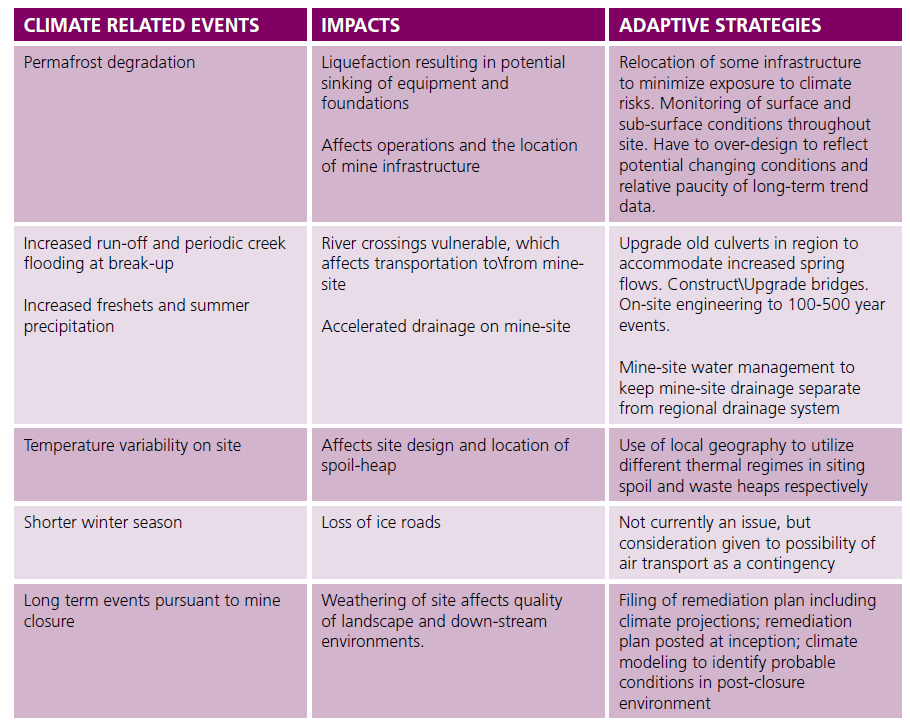Understanding and Assessing Impacts
Historically the major challenge facing mining in the Mayo region has been winter climate events, with extreme cold and snow and ice conditions and considerable seasonal variations in the hydrological regime affecting both mine-site conditions and transport. Winter temperatures average some -20 C and the area is underlain by discontinuous permafrost. Elevation, aspect, and seasonal weather extremes give rise to significant variations in local conditions. Local hydrology varies markedly through the year. Spring brings snowmelt, freshets, and consequent high water, while summer may be characterized by near drought conditions and low streamflow. Adapting to such extreme conditions has always been a fact of life for mining in this part of the Yukon, and historic adaptations included engineering to ensure mine and infrastructure were robust to withstand extreme winter and post-winter events, and to manage hydrological fluctuations. Operations were tailored to “the rhythm of the land”, with mines closed in winter and materials stock-piled in anticipation of transport disruptions or equipment failures. Mine planning was based on expectations of an extreme but more or less predictable annual climatic cycle and the notion that the future would be very much like the past. Winter climate conditions that historically impacted mining in the Mayo region remain the dominant hazard for contemporary operations. Snow accumulation and extreme cold adversely affect both equipment and transportation, and traditional responses in addressing these hazards come into play including infrastructure design and stockpiling of resources.
There is evidence that annual mean temperatures are increasing, and the Scenarios Network for Alaska and Arctic Planning (SNAP) has documented consistent increases in both temperature and precipitation in the Mayo Region over the past thirty years), and freeze-thaw characteristics are changing, with earlier ice break up and increased water flow swelling regional creeks and rivers and increased flooding. Discontinuous permafrost is present throughout the region, and because there is a long history of mining in the area it is known from both experience and science that permafrost underlying Victoria Gold’s mine-site is quite warm, and probably warmer than in the past, potentially giving rise to liquefaction risk.
